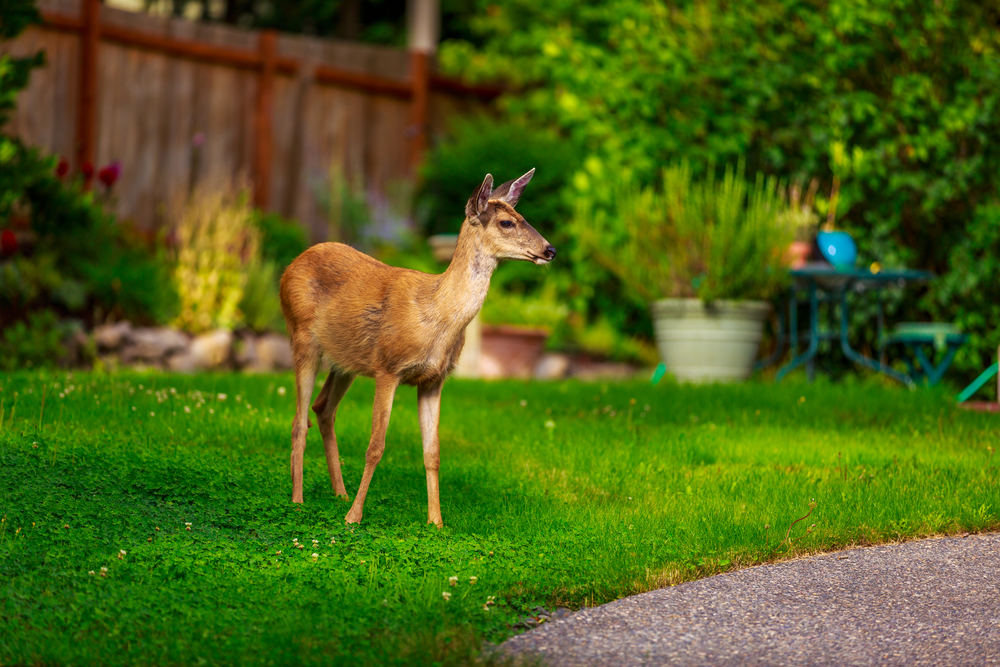Deer Resistant Plants in Florida

Florida’s lush landscapes, mild winters, and diverse ecosystems make it an ideal environment for a wide variety of plants. However, the state’s increasing deer populations have posed significant challenges to gardeners and homeowners alike. As residential developments expand into previously wild areas, human-deer conflicts are becoming more common. One of the most frequent frustrations arises when deer feast on ornamental plants, leaving behind damaged or destroyed landscapes. Although solutions like fencing and chemical repellents can offer temporary relief, a more sustainable and cost-effective approach involves cultivating plants that deer naturally avoid.
Understanding Deer Feeding Behavior in Florida Landscapes
Deer are opportunistic feeders, meaning they adapt their diet according to what’s readily available. Their preference is guided primarily by factors like taste, digestibility, and availability. While deer do not consume all plant species, no plant is entirely immune to their appetite—especially in areas with high deer densities or limited alternative food sources. In such cases, even plants typically avoided may become part of their diet.
It’s essential to understand that when experts or nurseries refer to “deer-resistant” plants, the term does not imply deer-proof. Rather, it signals that these species are generally unpalatable to deer due to their texture, scent, or taste, and thus are less likely to be consumed when other food sources are available. However, extreme droughts, high deer populations, or scarcity of preferred foods can compel deer to sample even the most resistant varieties.
Top Annuals and Perennials for Deer Resistance
Incorporating deer-resistant annuals and perennials into Florida gardens is an effective strategy for minimizing plant damage. Many of these species possess natural deterrents such as aromatic foliage, bitter tastes, or thorny textures that deer find unappealing.
Achillea, commonly known as yarrow, is a reliable perennial that not only resists deer but also thrives in Florida’s sunny conditions. Butterfly weed, or Asclepias, offers vibrant orange blooms and attracts pollinators while deterring deer. Coreopsis, Florida’s state wildflower, is both drought-tolerant and deer-resistant, adding cheerful yellows to any landscape.
Plants like Crown of Thorns and Dusty Miller rely on their unique physical characteristics for protection. Crown of Thorns features sharp spines, while Dusty Miller’s silvery, fuzzy leaves are unappetizing to deer. Meanwhile, Gaura, also known as Whirling Butterfly, displays delicate, fluttering flowers that deer typically overlook.
Other popular options include Angelonia, Cleome, and Begonia, which all bring bright, continuous blooms throughout the growing season while remaining unattractive to deer. Gardeners can also rely on perennials like Blanket Flower (Gaillardia) and Mexican Petunia (Ruellia) for hardy, deer-resistant ground cover.
Salvias: A Diverse and Resistant Choice
Salvias represent one of the most versatile and deer-resistant groups of plants suitable for Florida gardens. Their aromatic foliage and tubular flowers make them unpalatable to deer while providing a magnet for hummingbirds and bees.
Among the standout species is Salvia coccinea, also known as Scarlet Sage, with its striking red blooms. Autumn Sage (Salvia greggii) offers a long blooming season and a variety of colors, from pink to deep red. Pineapple Sage (Salvia elegans) adds fragrant foliage and vibrant red flowers late into the growing season.
Salvia guaranitica, recognized by its deep blue flowers in varieties like ‘Black & Blue’, provides lush color contrast in garden beds. Mystic Spires and Indigo Spires hybrids offer additional options for gardeners seeking low-maintenance, deer-resistant plants that tolerate Florida’s heat and humidity. Whether grown as annuals or perennials, Salvias bring both aesthetic appeal and practical benefits to landscapes vulnerable to deer damage.
Integrating Deer Resistant Plants in Florida Landscaping
Successfully protecting your landscape from deer involves more than simply planting a few resistant species. Strategic garden design is key to minimizing deer browsing while maintaining visual appeal.
Start by placing the most vulnerable plants closer to your home or areas of high human activity where deer are less likely to venture. Position deer-resistant species around the perimeter of your property or garden beds to create a natural barrier. Mixing textures, scents, and colors can further confuse and deter deer.
Additionally, layering plants by height allows for the creation of physical and sensory deterrents. Tall, aromatic plants like Salvias can serve as a frontline defense, while mid-layer perennials like Coreopsis and Blanket Flower provide consistent ground-level protection. Groundcovers such as Mexican Petunia and creeping varieties like Lysimachia (Creeping Jenny) fill in gaps where deer might otherwise explore.
It’s important to remain flexible in your planting strategies. Monitor local deer activity and adjust your plant selections accordingly. If deer pressure intensifies, incorporate more resistant species or reinforce vulnerable areas with physical barriers like decorative fencing or netting. By balancing aesthetics with practicality, homeowners can achieve a sustainable and deer-resistant garden without sacrificing beauty.
A Resource to Simplify Your Plant Selection
To support Florida homeowners in selecting the right plants for their landscapes, we’ve prepared a comprehensive guide listing annuals, perennials, and Salvias known for their deer resistance in our region. This guide compiles plant names, care instructions, and resistance notes into an easy-to-reference format.
Download your free guide here:
Download Deer Resistant Plants Guide PDF
This printable PDF can serve as a handy reference when visiting local nurseries or planning your garden layout. By incorporating these recommended species, you’ll enhance your landscape’s resilience against deer browsing while enjoying vibrant blooms and healthy plants year-round.
Conclusion
While no plant offers absolute immunity against hungry deer, selecting resistant species suited to Florida’s climate significantly reduces the risk of damage. With thoughtful planning and the right plant choices, you can create a beautiful, sustainable garden that thrives in harmony with Florida’s wildlife.
